The history of Fender’s sparkle finishes
Vintage guitar guru David Davidson of Well Strung Guitars takes us back to the hot-rod car culture of 1950s California to pick up the story of Fullerton’s most lustrous paint jobs
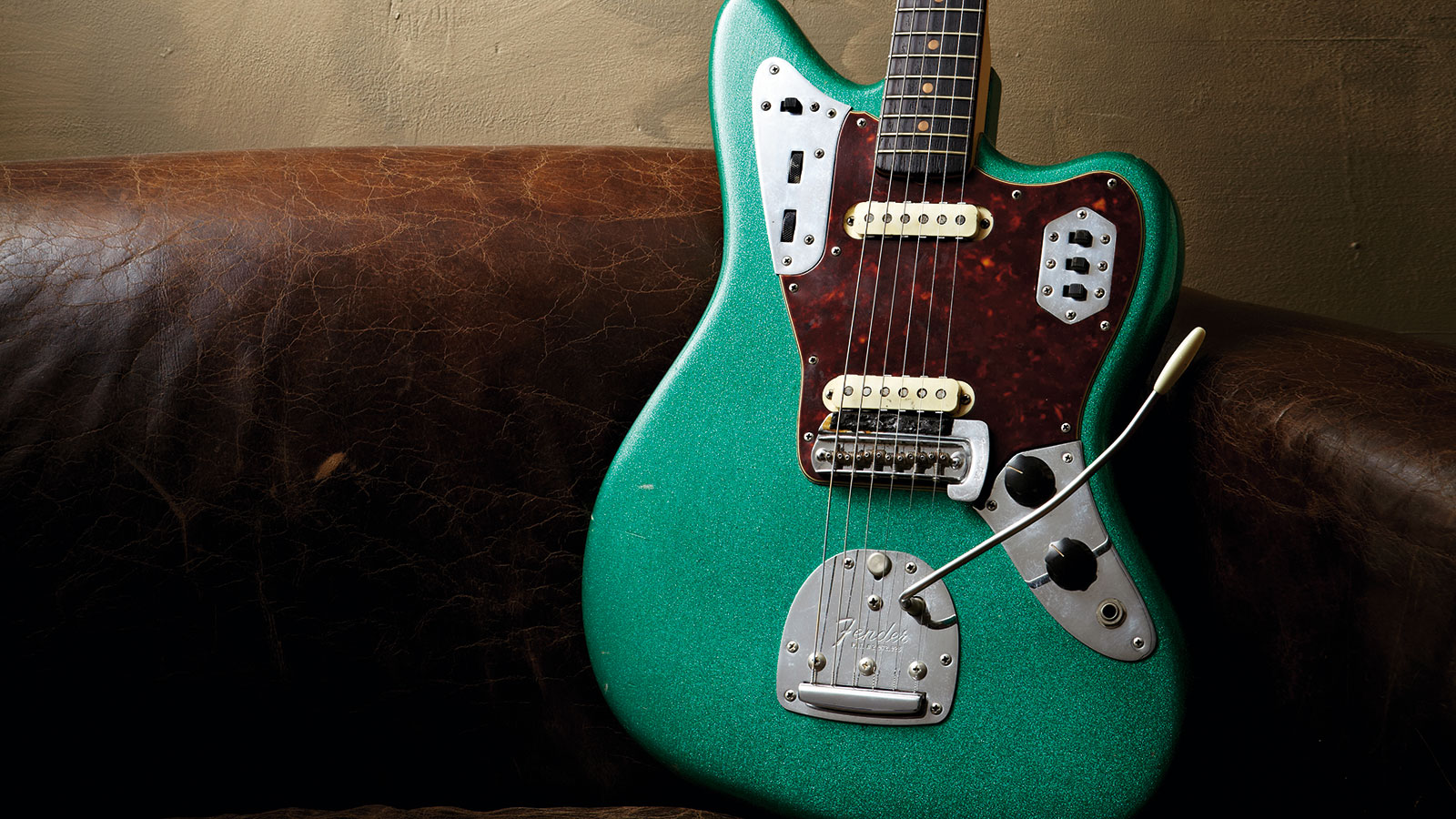
Sparkle finish guitars are among the rarest and most enigmatic of Fender instruments. Decked out in metallic paint and embellished with metal flake, these dazzling beauties, though striking in appearance, often carry a mysterious past.
While they are considered a true Fender finish, for a long time these special paint jobs were tasked to third parties.
As custom finishes in the realist sense they extended not only outside the boundaries of Fender’s automotive-inspired custom colour chart but beyond the limits of the factory itself. Perfectly encapsulating the golden era of American guitars, cars and movies, these glittering vintage rarities are a jewel in California’s cultural crown.
“It was mostly about the hot-rod culture in California,” begins guitar guru David Davidson of Well Strung Guitars. “People associate sparkle finishes with surf, but it really wasn’t the surf thing so much as it was about the car culture in Southern California. That really was a big deal at the time, and Fender was right there in the middle of hot-rod country.
“They were in Fullerton, California, and all that stuff was happening around them. So, naturally, the idea of painting your guitar to look like a hot-rod was a cool thing. There were a lot of bands with hot-rod names, and groups were writing songs about cars. There was Ronny & The Daytonas, for example, and The Rip Chords who wrote Hey Little Cobra about the Shelby Cobra. Dick Dale wrote about cars. As did The Beach Boys. So having guitars that kind of resembled cars was a really big deal.”
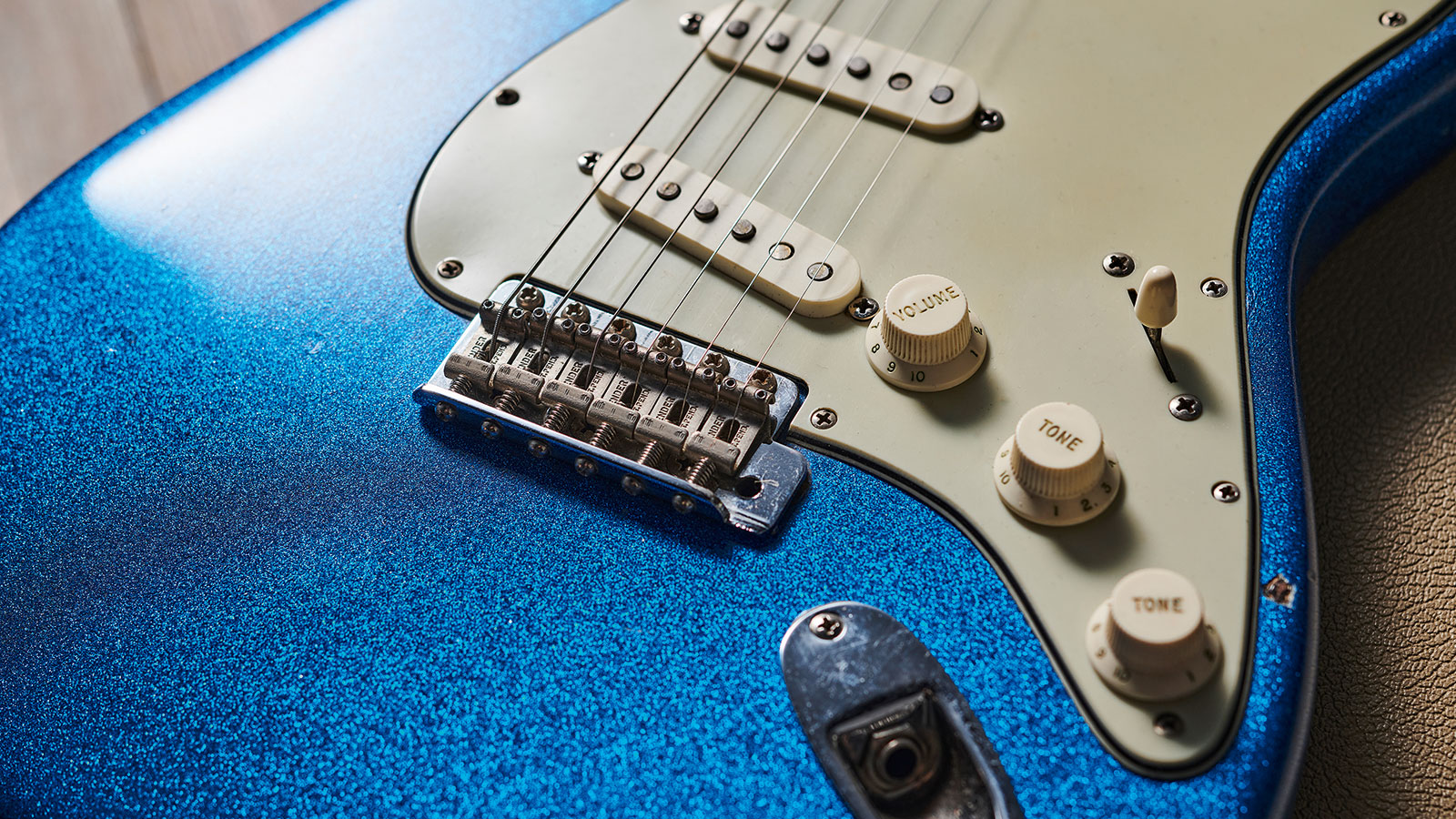
All that glitters isn’t gold
“There were a lot of car movies and beach movies made back in the late 50s and early 60s,” explains David. “Typically, there’s a scene where a guy pulls up in something blue sparkle or red metal flake, or green metal flake like the ’62 Jaguar [pictured top]. So, as you can imagine, people started saying, ‘Hey, I want my guitar painted like that!’
“It starts to hit a fever with Ann-Margret in [the 1963 feature film] Bye Bye Birdie. That movie features a highly customised Fender Jaguar. It’s unbelievable. It’s black with a gold pickguard and controls, and it has this big gold sparkle ribbon painted on that says ‘Conrad Birdie’.
Get The Pick Newsletter
All the latest guitar news, interviews, lessons, reviews, deals and more, direct to your inbox!
People knew I was buying them and I saw many. But I’ve got to tell you: more than 80 per cent of them were fake!
“They made several different guitars for the producers to look at and decide which guitar [protagonist] Conrad Birdie was going to play. One of them is a gold Jaguar with a black to gold sparkle sunburst pickguard and a matching headstock. I have that guitar here.”
David’s collection of Fender sparkle finish instruments is enviable. Having hunted down these rarities for many years he has built up a ton of knowledge on their unique idiosyncrasies. But how does he manage to navigate the minefield of the vintage market? After all, genuine sparkle finishes are notoriously difficult to authenticate.
“When I started to do the deep dive into sparkle guitars years ago, I got offered a lot of them,” says David. “People knew I was buying them and I saw many. But I’ve got to tell you: more than 80 per cent of them were fake! Authenticating them is about using all your senses – sight, sound, touch, texture and even smell. It’s based on experience.
“There were different shops, each with their own painting techniques. Firstly, there is the blue-grey primer era. Then there is the rough era, followed by the smooth era. Also, when I look at a chip in the paint, I can see the stages of how the paint was applied. Knowing paint and being a guy who really loves automotive things and paint finishes, I’ve gotten a really good feel as to what it’s supposed to look like.
“Over time, you start to notice consistencies and inconsistencies that make you think, ‘Okay, this is the way that every one of these looks for that period.’ It took me going through about 80 sparkle finish Fenders to figure it out.”
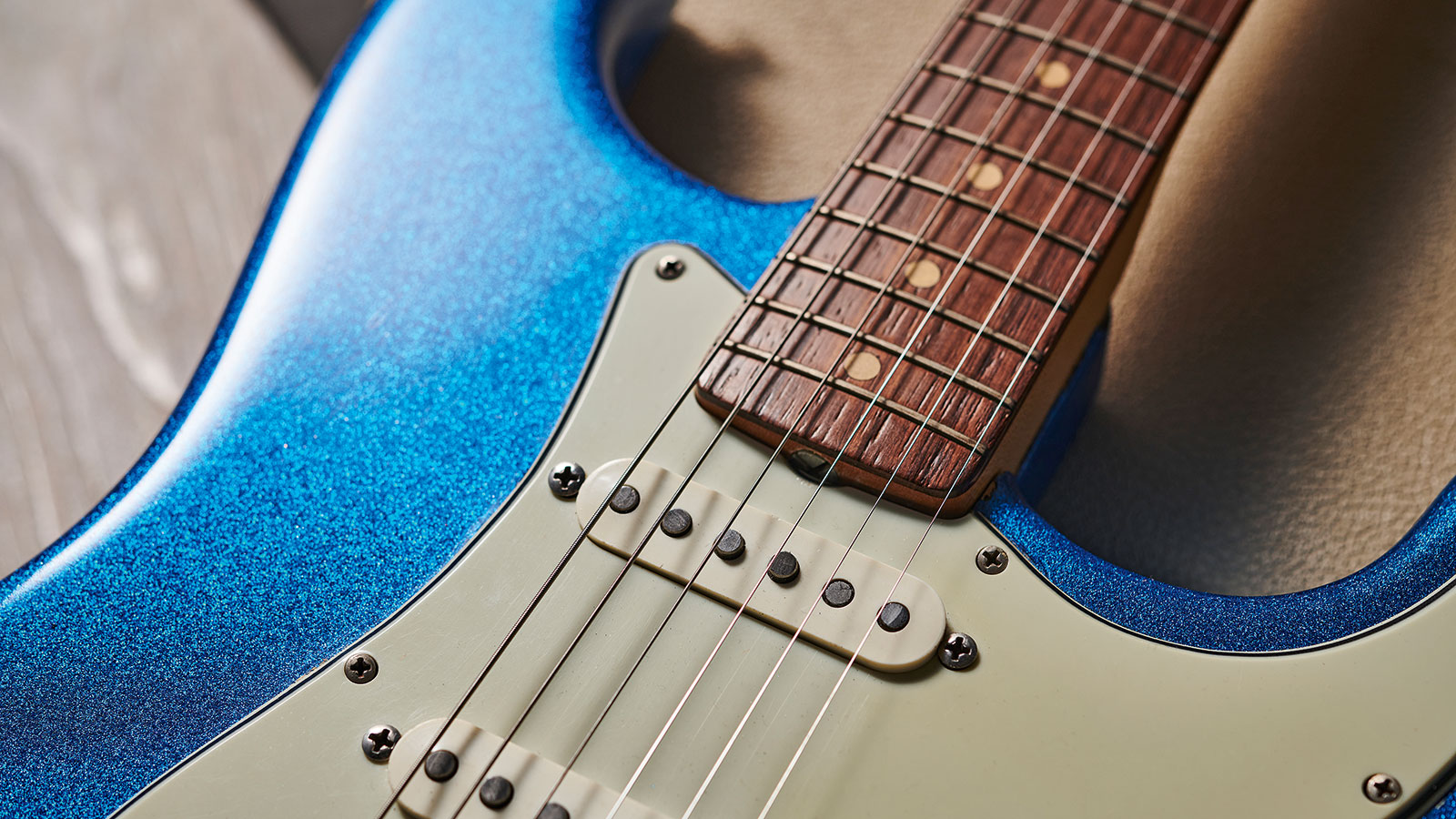
Outside job
According to David, Fender outsourced all sparkle finishes up to 1966, the reason being they were unequipped to complete such specialist work in-house. As ad hoc custom orders, one might reason it was uneconomical to invest in the necessary equipment and expertise to meet such relatively infrequent requests. After all, Leo Fender was all about streamlining manufacturing processes.
“This is the bottom line: before 1966, the Fender manufacturing facility never painted a guitar in a sparkle finish,” underscores David. “All sparkle finishes were subbed out to be done at local shops. Fender used a very common spray gun in that period called a Binks Model 7. If you look at any old pictures where they’re spraying guitars, they’ll be using one of those.
This is the bottom line: before 1966, the Fender manufacturing facility never painted a guitar in a sparkle finish
“It’s a suction-style paint gun, meaning you fill a cup with paint, it gets sucked up a tube, mixed with air and then comes out of the main nozzle. On the other hand, area hot-rod shops used a downdraft paint gun where you put the material into a cup that is attached to the top. It’s gravitational, meaning the paint falls into the paint gun instead of getting sucked up.
“When Fender used a suction-style Binks Model 7, the suction was not strong enough to pull up that heavy metal flake. The downdraft paint guns were what was needed and that’s why they went to hot-rod shops to be begin with. However, by 1966 Fender had their own paint guns that were able to do this process.”
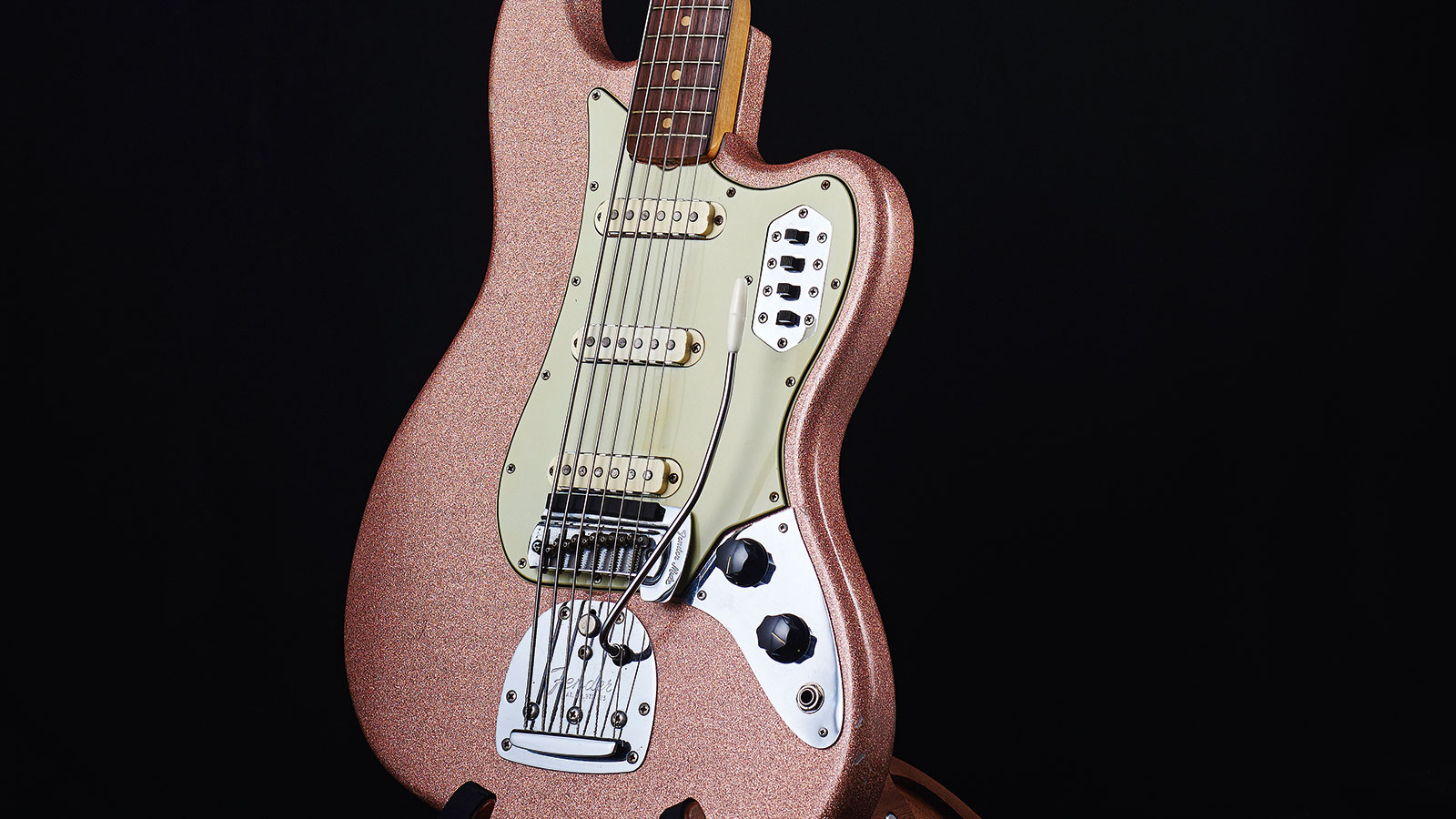
So, when did Fender start sending them out? The company didn’t publish its custom colour chart until the early 60s, so any custom colour from the 50s is especially rare. But a 50s sparkle finish?
“First of all, they never used a regular custom colour for sparkle finishes,” highlights David. “It was a completely different colour – normally a hot-rod colour of some kind. Think about what people were driving and what colours they were painting the cars: it was gold, silver, red, white, blue and green. That was about it. Those are the Fender sparkle colours.
The earliest instruments I’ve seen that were sold as new in a sparkle finish were made in 1957 as presentation pieces
“The earliest true sparkle Fender guitar that I know of is actually a red ’55 Stratocaster,” David tells us. “It was made for Jimmy Bryant. But he did not originally get the guitar in sparkle; he gave it back to Fender who then had it repainted for him. I don’t know exactly when the finish was applied, but it has the typical blueish- grey undercoat of the first era of sparkle finishes from the 50s.
“The earliest instruments I’ve seen that were sold as new in a sparkle finish were made in 1957 as presentation pieces. And I have a 1957 blue sparkle Precision Bass that was owned by Lloyd Trotman who was the bass player for Ray Charles; it was also owned by Shifty Henry who played with Elvis. I also have a ’57 Stratocaster here with a blueish-grey undercoat that appears on early sparkle finishes. We surmise that they were all done by one person.”
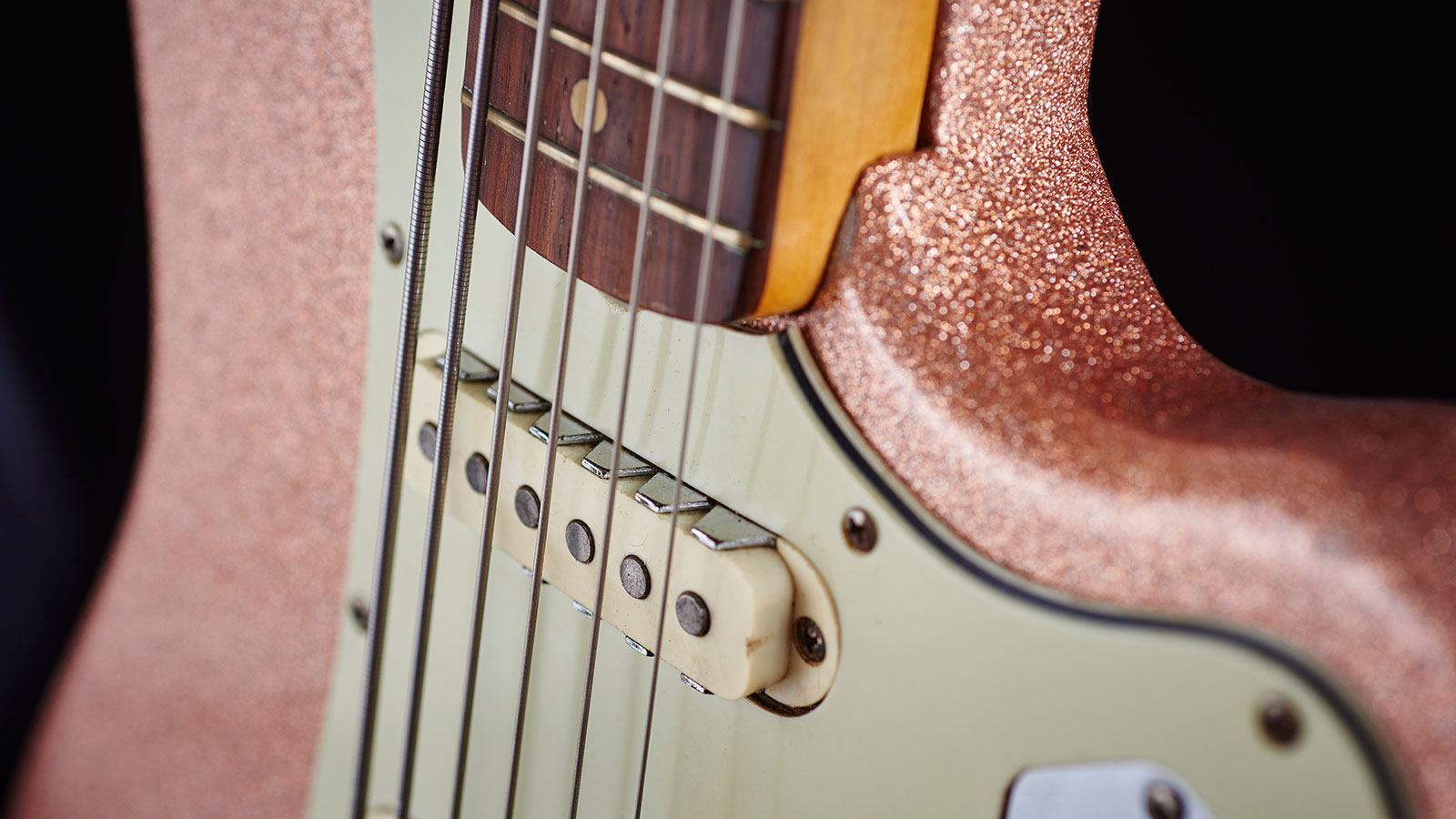
On the beach
According to David, other sparkle finishes from the late 50s he’s examined look very similar. However, by ’59, the undercoats and finish textures appear different.
“I have a ’59 that doesn’t actually have an undercoat,” he points out. “I think by that time they were using someone else to do them. Not all the names and places are on record, but we know a guy named Dennis Swiden did a lot of the beach guitars, including Dick Dale’s.
The finish on them is very rough. It feels like rubbing your hand over pebbles
“The famous silver sparkle Buck Owens and Don Rich guitars [from the early 60s] were made from crushed glass, so the finish on them is very rough. It feels like rubbing your hand over pebbles. There were three of those guitars made: one was made for Buck, one was made for Don, and [Fender employee] George Fullerton kept one for himself.
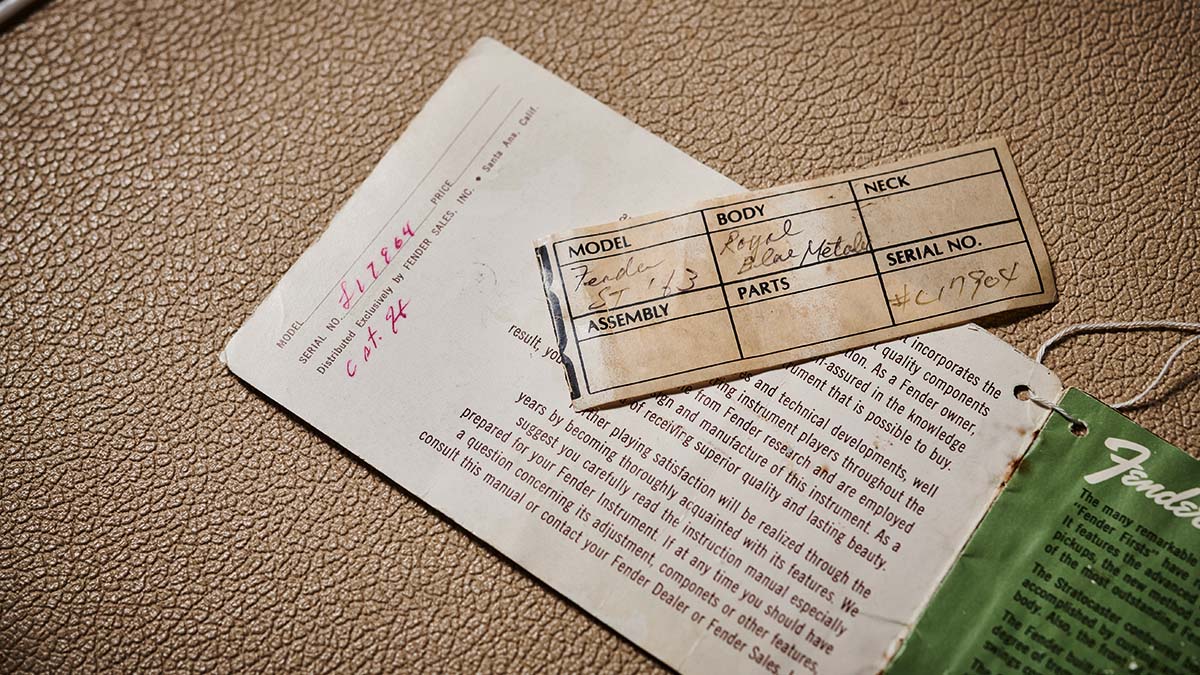
“I have that guitar here. They’re all Custom Telecasters with rope binding on the front and the back. Interestingly, they were also the first maple cap [fretboard] guitars ever made. And they have matching headstocks too, so they’re really, really cool.
“I also have guitars from the early 60s that are not quite crushed glass like the Buck Owens and Don Rich guitars, but they do have very, very heavy metal flake finishes. What’s interesting is that their texture changes depending on who painted them.
“But by 1966, when Fender start doing sparkle finishes in-house, the texture becomes very smooth. I think they were just sprayed with a very thick clearcoat, which they were then able to polish to a smoother finish. It was a refinement.”
- Guitarist would like to thank Well Strung Guitars in Farmingdale, New York, and Vintage ‘n’ Rare Guitars in Bath.
Rod Brakes is a music journalist with an expertise in guitars. Having spent many years at the coalface as a guitar dealer and tech, Rod's more recent work as a writer covering artists, industry pros and gear includes contributions for leading publications and websites such as Guitarist, Total Guitar, Guitar World, Guitar Player and MusicRadar in addition to specialist music books, blogs and social media. He is also a lifelong musician.
“For years, the only 12-string acoustics I got my hands on, the necks always pulled off after a bit. I earned a lot of money replacing them!” Why one of the UK’s most prolific luthiers is a bolt-on acoustic die-hard
“It holds its own purely as a playable guitar. It’s really cool for the traveling musician – you can bring it on a flight and it fits beneath the seat”: Why Steve Stevens put his name to a foldable guitar


![A black-and-white action shot of Sergeant Thunderhoof perform live: [from left] Mark Sayer, Dan Flitcroft, Jim Camp and Josh Gallop](https://cdn.mos.cms.futurecdn.net/am3UhJbsxAE239XRRZ8zC8.jpg)









